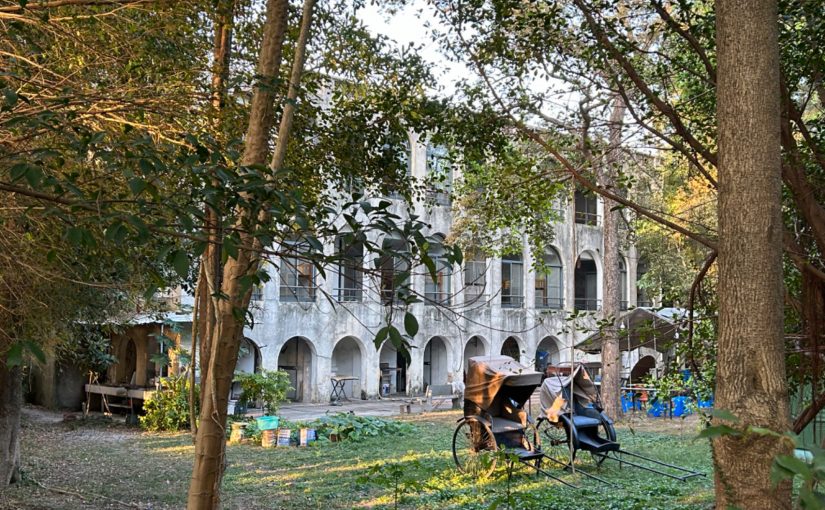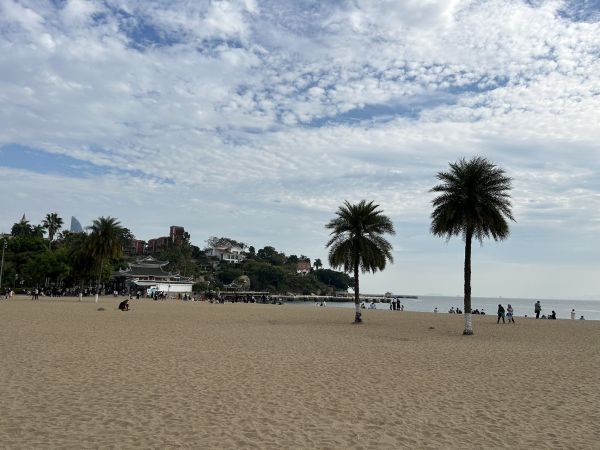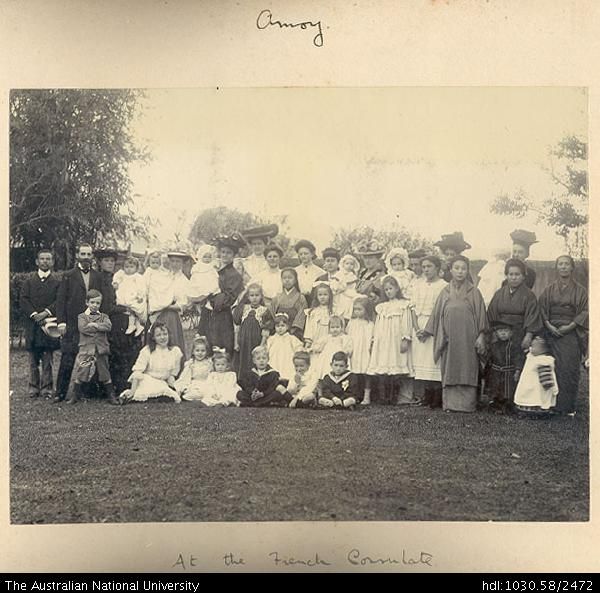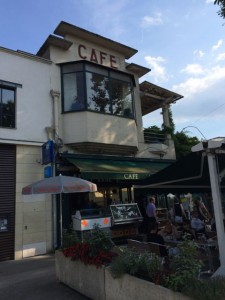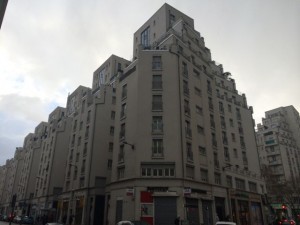Xiamen/厦门, historically called “Amoy” after the local dialect pronunciation, had a long history of international trade before becoming one of the five “Treaty ports” in 1842 following the treaty of Tianjin. Foreign consuls moved from Amoy city to the island of Gulangyu (鼓浪屿), located opposite the city in 1902. The whole island became an international settlement, with land regulations and municipal council like in Shanghai and consulates from many nations. Gulangy (鼓浪屿) is one of my favorite places in China, and I have been to the island 5 times since 2005 (See posts “Night on Gulangyu“, “Rain on Gulangyu” and “The revival of Gulangyu” for more details). This new trip was an opportunity to search for the former Amoy French Consulate on the island.
The backwater island I first saw in 2005 has now transformed into a tourism Mecca since getting on of the UNESCO protected heritage list in 2017. Although tourists have come in number, it is still possible to avoid massive crowds by visiting the island in the low season, like in the winter apart from Chinese New Year. With a little sun, temperature gets easily to 15-20 degrees, perfect for walking around. Most crowded roads are the one going along the coast overviewing Xiamen city, as well as the one going through the island to the main beach. They are best avoided in the afternoon, when most people come over.
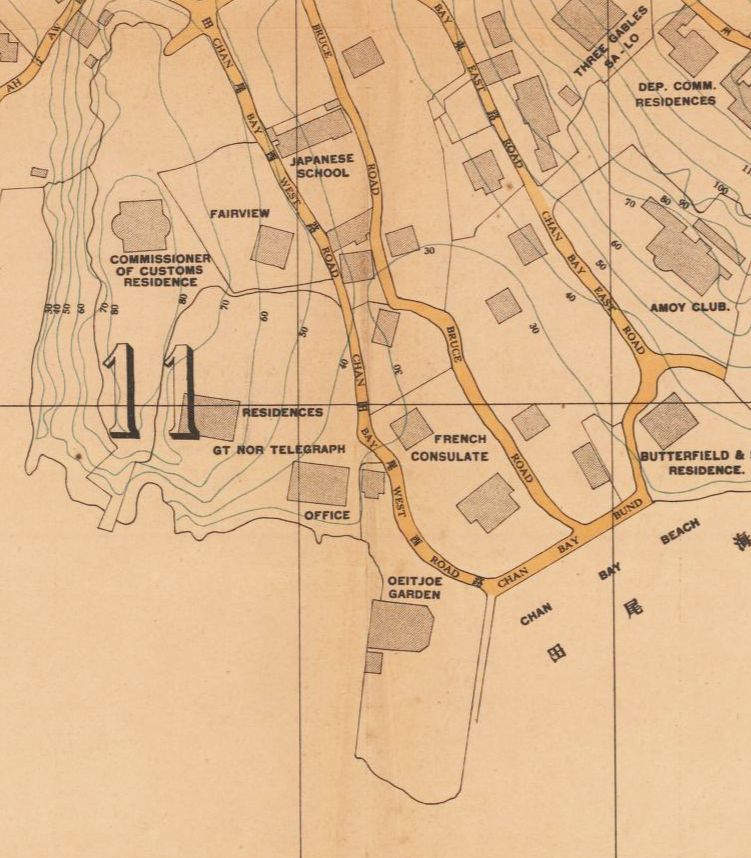
As per the old maps, the former French Consulate of Amoy (or “Consulat Français de Amoy” in French), was located on a secluded beach on the South West side of the island. The whole area around “11” on the map is now the Gulangyu Piano museum. The former Chan Bay West road (today Tian Wei Road) is blocked, as part of a large estate that was probably military zone a few years ago. Fortunately, today’s Tianwei Road splits into two branches, one of each is open leading to the former Danish Telegraph Office and former Oeitjoe Garden.
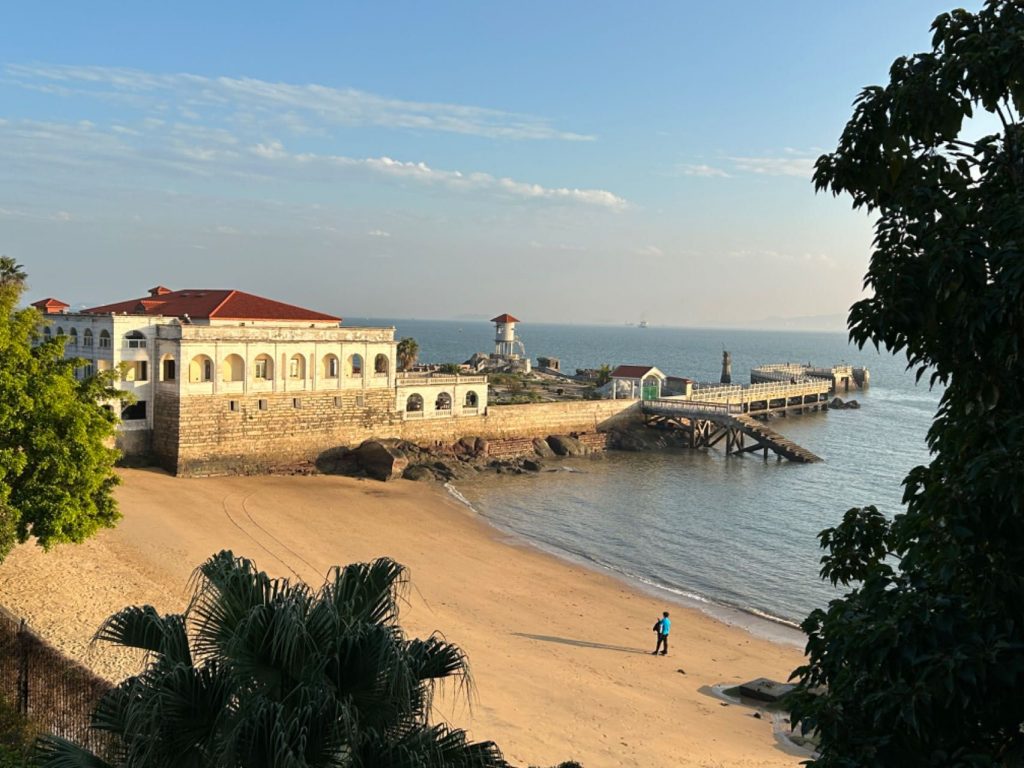
As indicated on the map, the former French Consulate is the building on the other side of the jetty, on the Chan Bay Beach. Although the building itself cannot be accessed, I managed to catch a picture (see below). A large plot of land around the former consulate was surrounded by large tents, and 2 rickshaws (!) were parked in the front. My guess is that it is currently used as a film set.
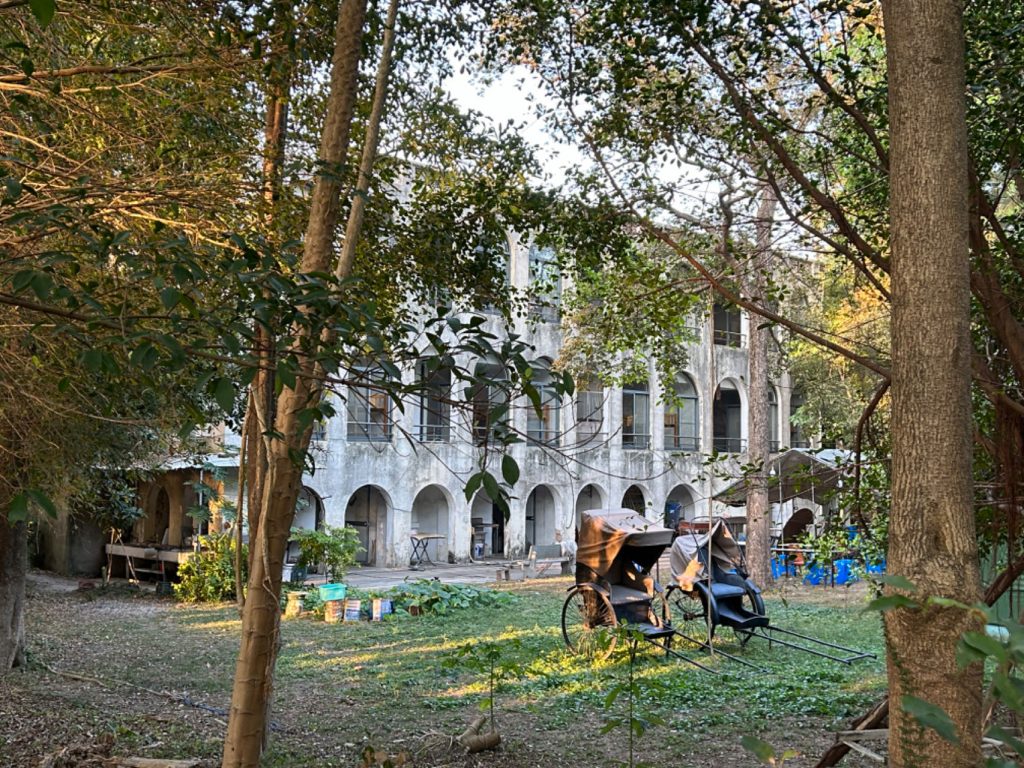
Although it has quite a vast plot of land, Amoy French Consulate was never really seen as important by the French administration. Very little information is available on the internet about it. After consulate closure in the late 1940s, the Consulate’s archives were kept at the French Embassy in Beijing until 1981, when they were brought back to France. As French historian Roger Pérennès explains, France had a presence in Amoy since 1901, with a vice-Consulate from 1906 to 1916. Below picture from the Australian University archives stating “Amoy, at the French Consulate” is dated from 1907.
A proper consulate was only open on 1st December 1925, with Fernand Roy (1885-1967) being the Consulate for most of the time until end 1939. With little activity during WW2, the consulate finally closed down in February 1946.
Since the consulate was actually open very much later than others, it could explain that the location is away from the main port, on a more secluded part of the island as better located ground were already taken. As a comparison, the American, British and Japanese Consulates were located on the other side of the island, overlooking Xiamen and the main port. I did not find any information about the construction of the French consulate building, but the building looks like it was “ruinovated” at some point later. Below is another picture I shot in 2009 in a previous visit that is mentioned in post “The revival of Gulangyu” when garden and the building was much better maintained.
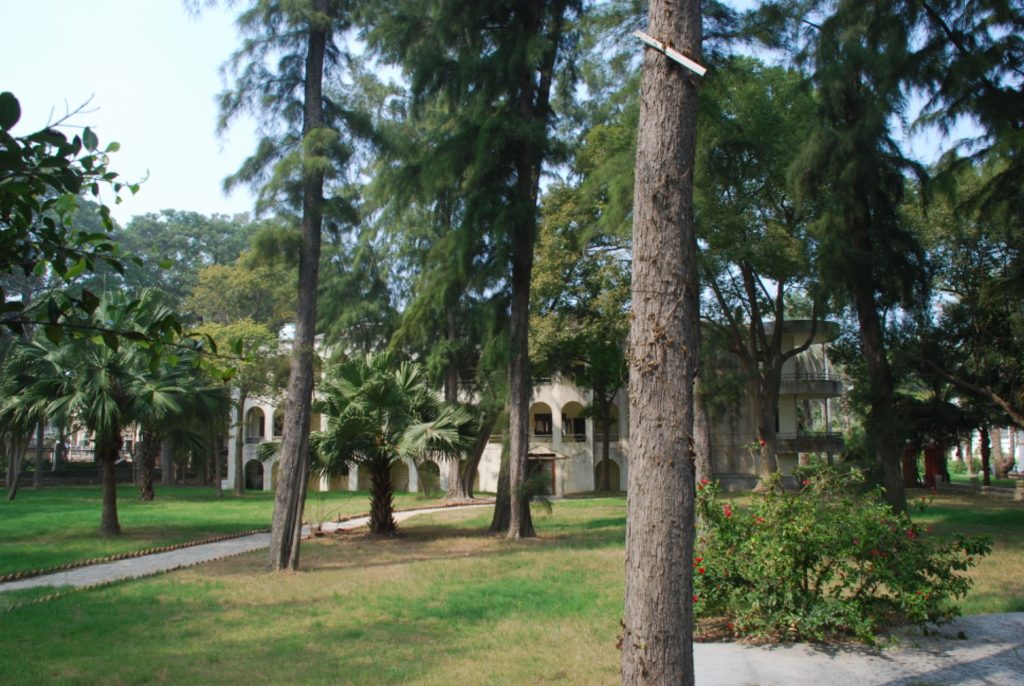
The site of the French consulate is located near the former Northern telegraph office, which was built in 1918 in a somewhat similar style (see below).
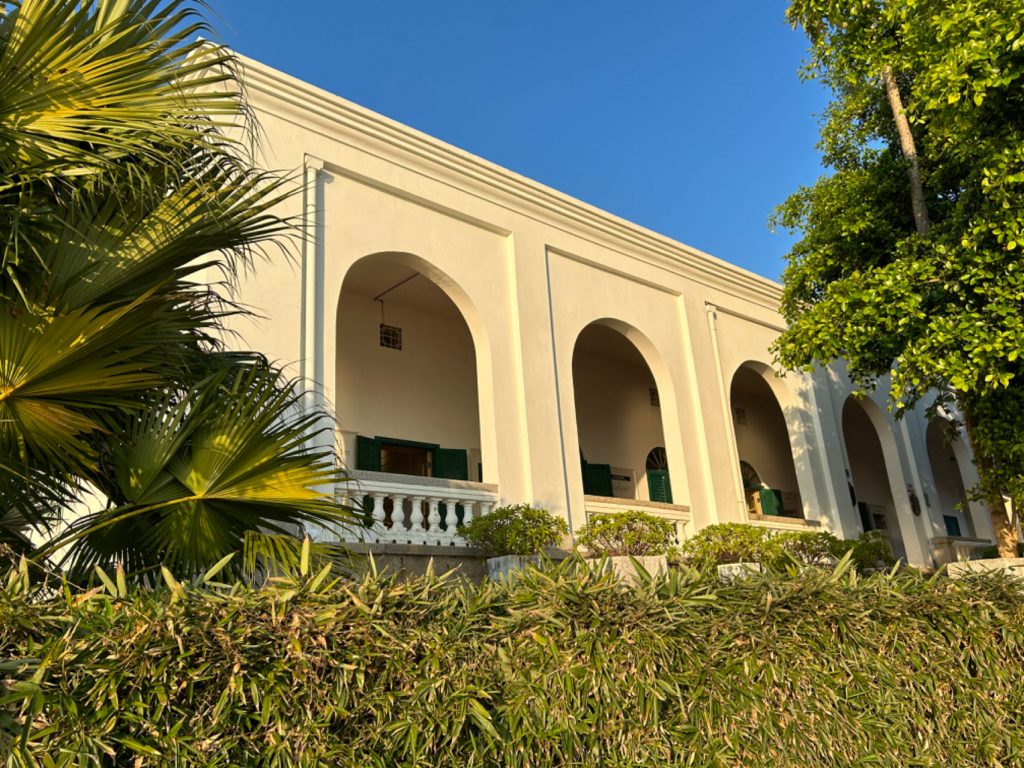
The next building on the road, shown on the map but with no mention, is also of similar style. It was probably built around the same time.
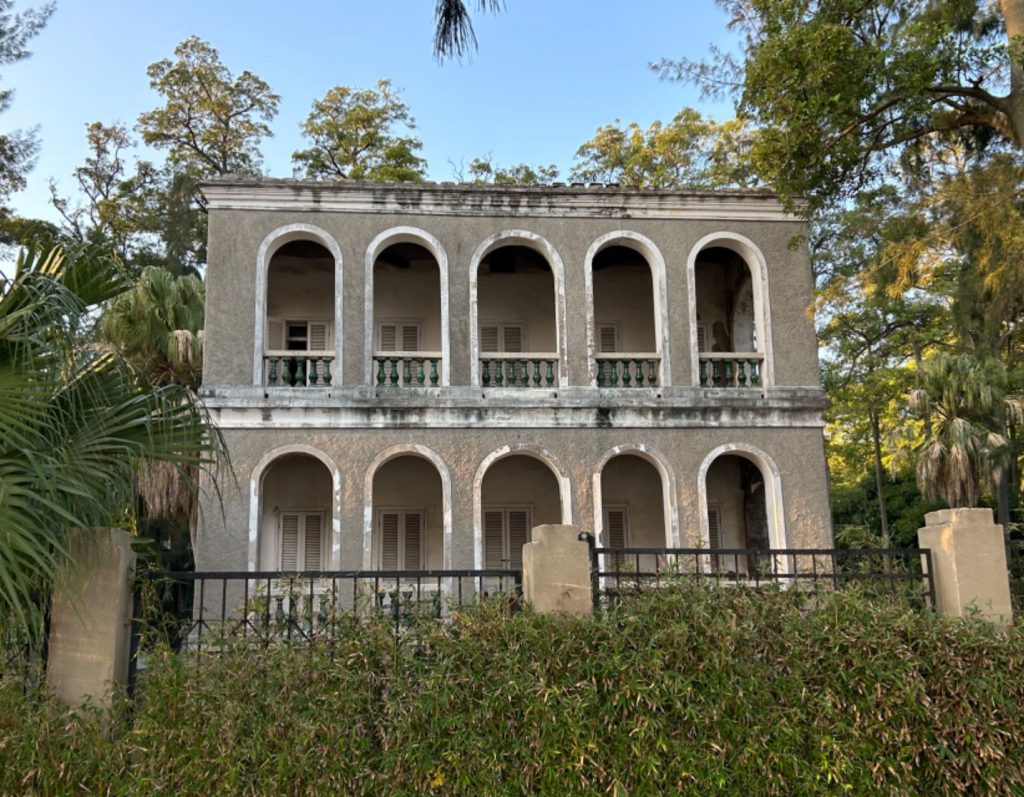
Hopefully more information will come up about the former French Consulate in Amoy as French archives and others are researched. I will definitely come back to my favorite Island Gulangyu. For more posts about this topic, see posts “Night on Gulangyu“, “Rain on Gulangyu” and “The revival of Gulangyu“.
For more information about French Consulates in Old China, see post “Former Shanghai French Consulate“.
